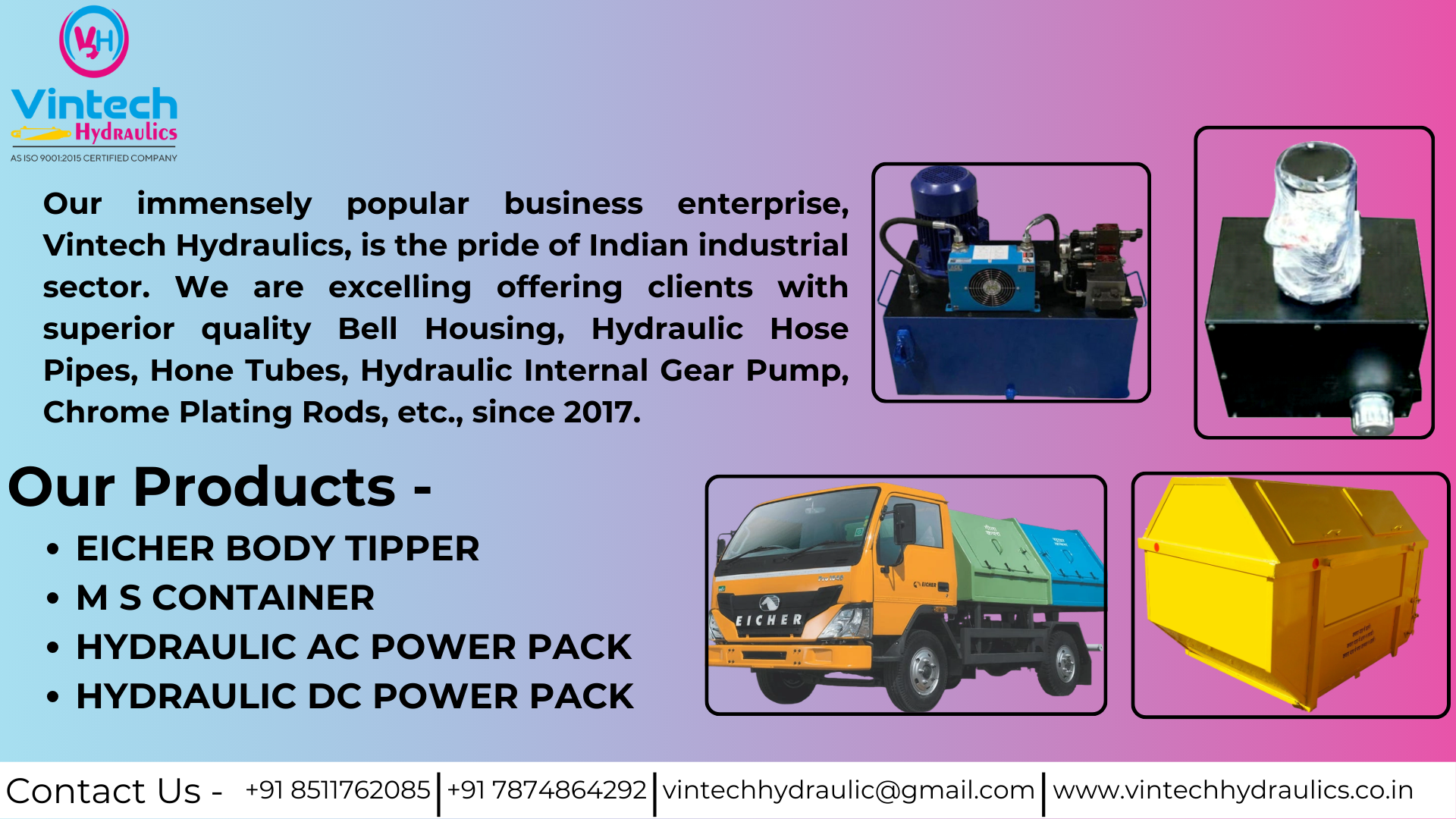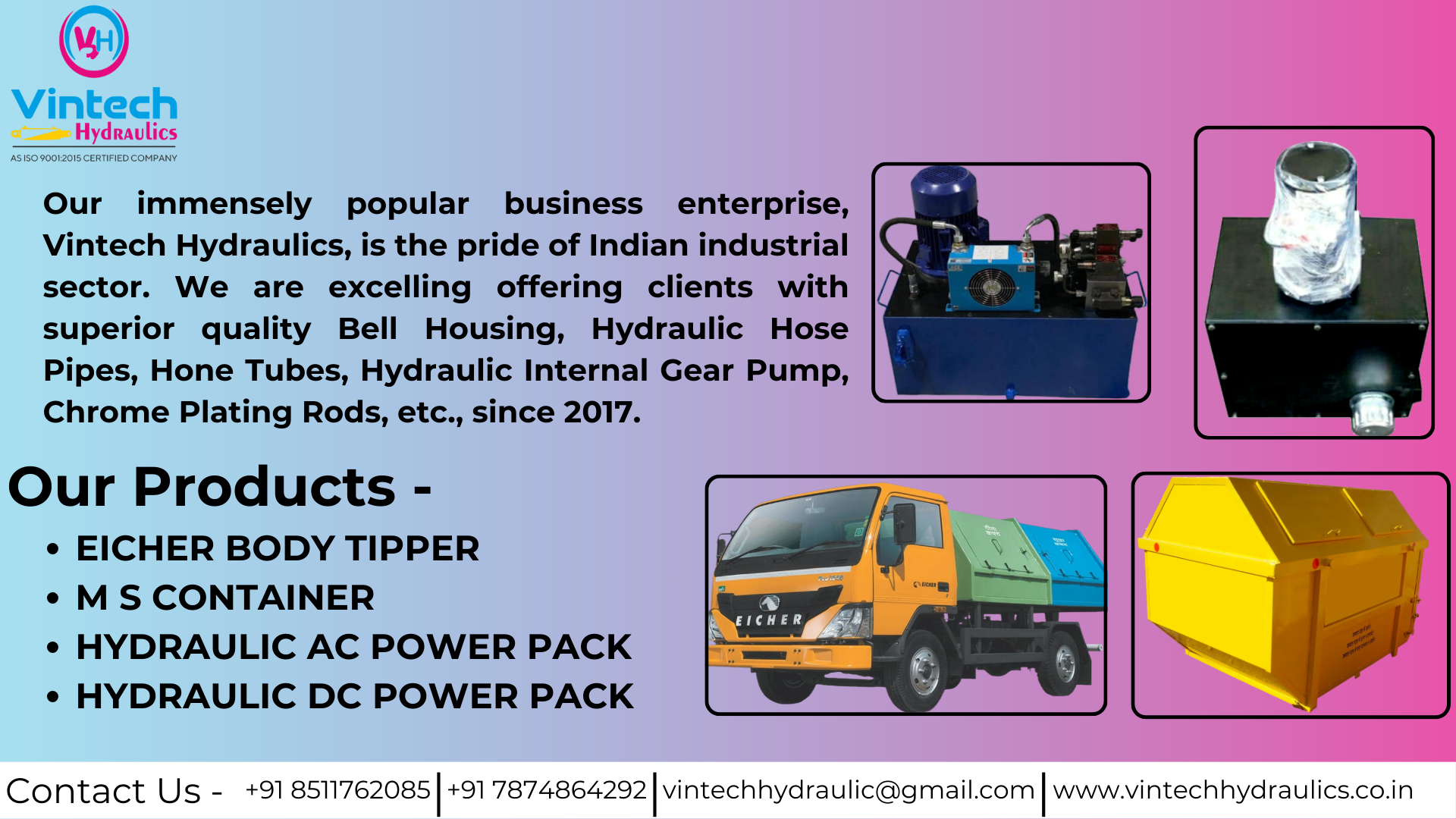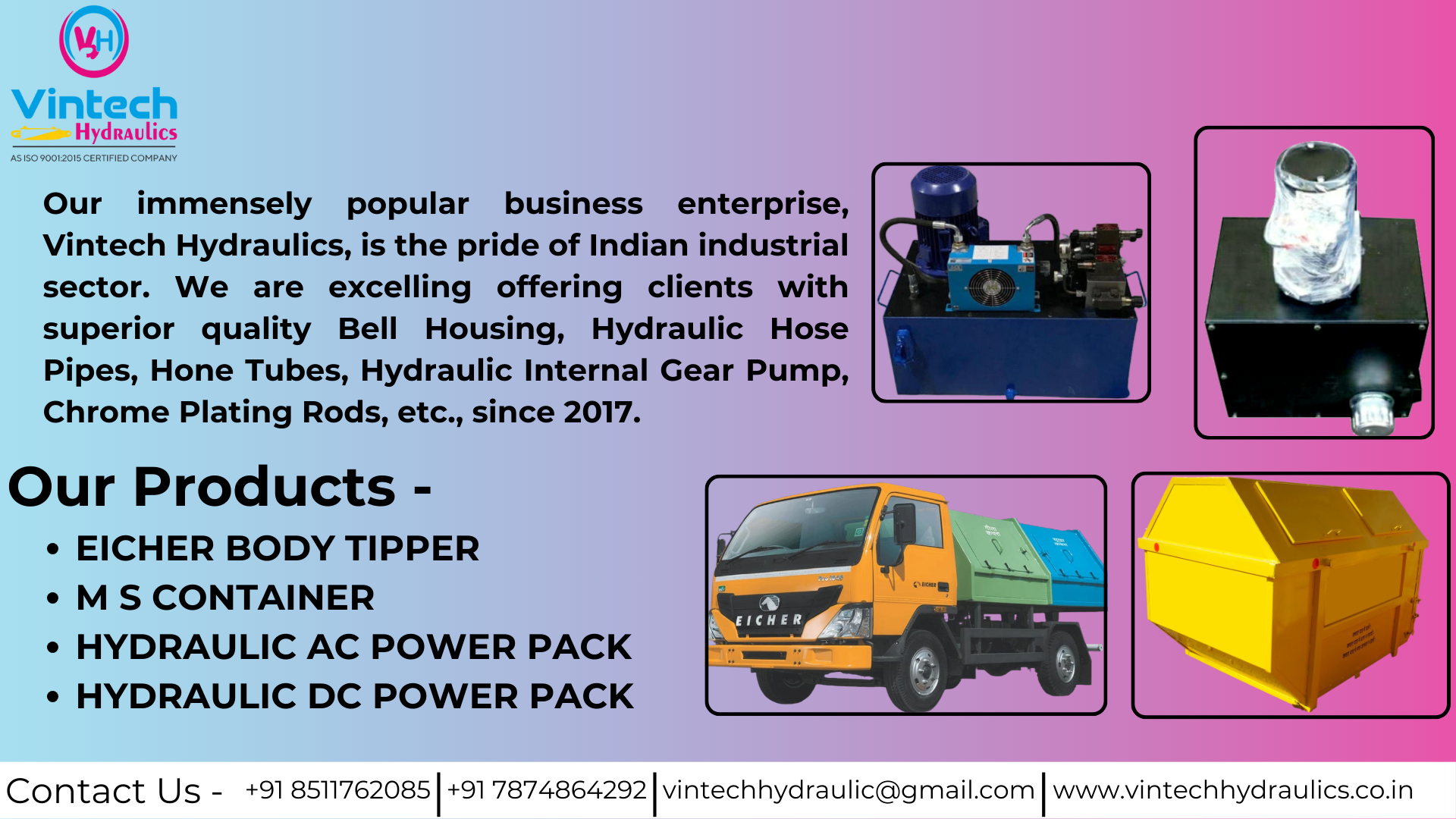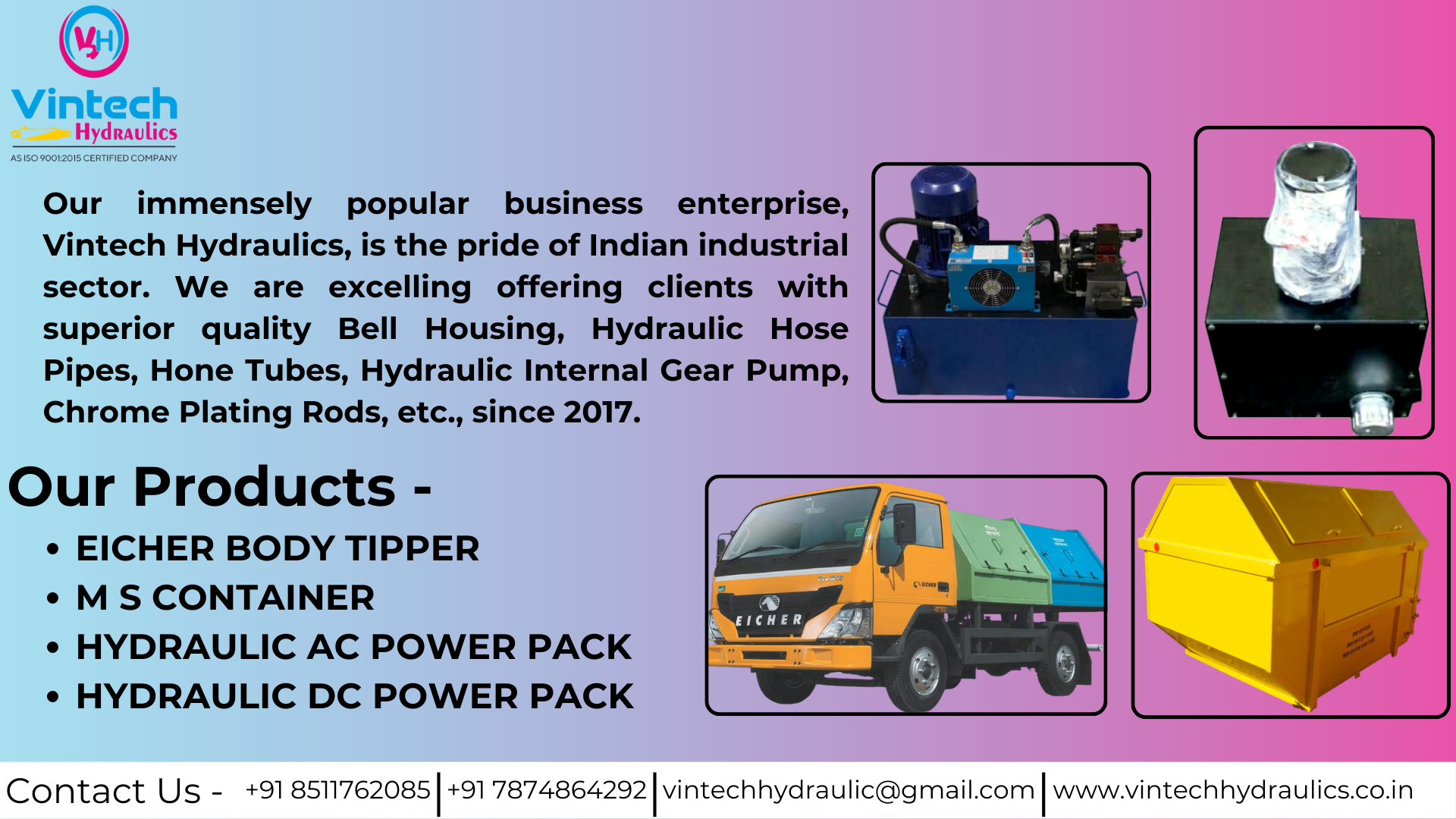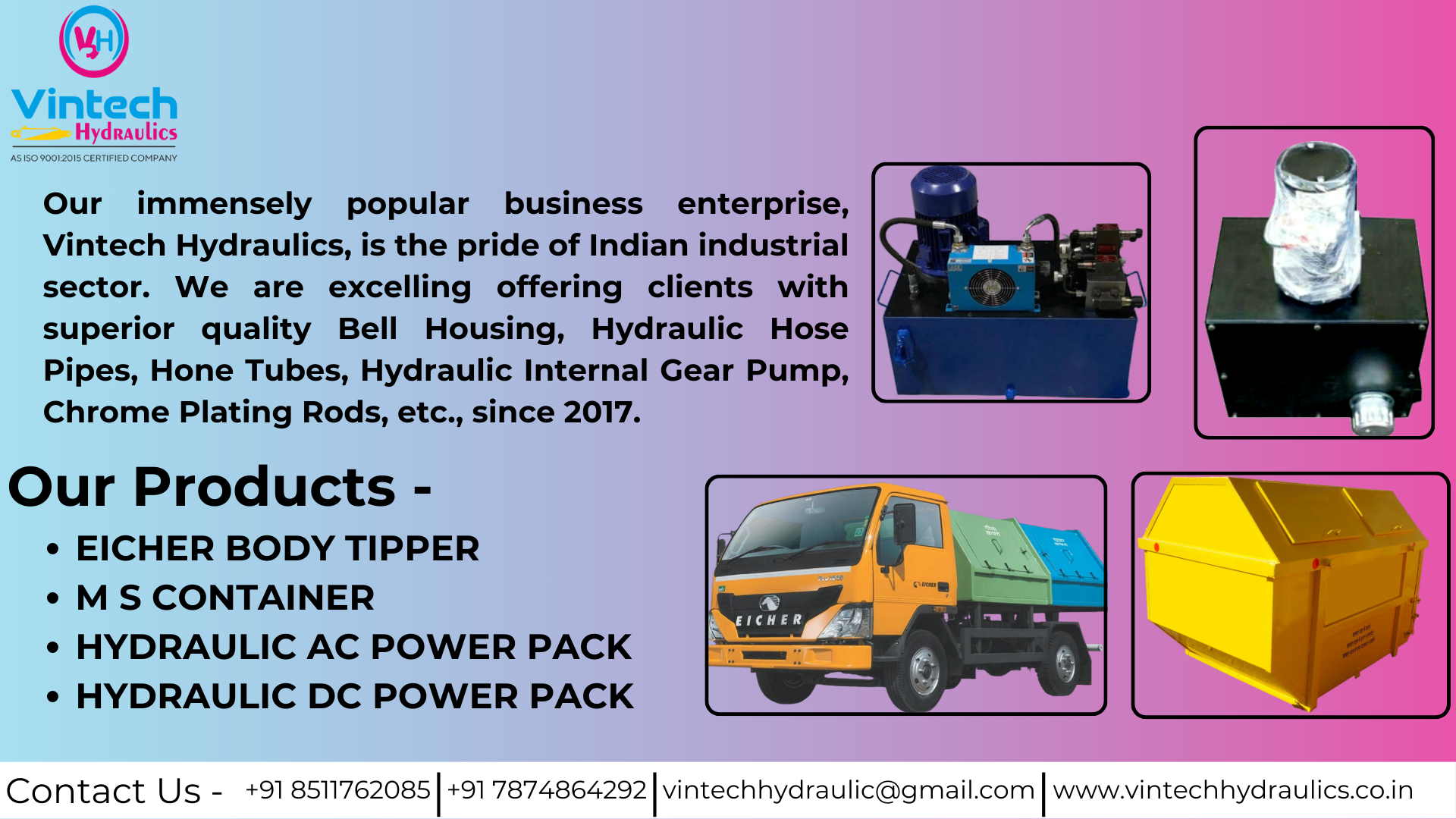
Small hydraulic cylinder manufacturers
Small Hydraulic Cylinder Manufacturers in India
Small hydraulic cylinders are crucial components for applications requiring powerful, precise linear motion in a compact form factor. From robotics and medical equipment to automation and mobile machinery, these miniature actuators deliver a high force-to-size ratio, making them indispensable where space is at a premium. As leading small hydraulic cylinder manufacturers in India, Vintech Hydraulics specializes in designing and producing custom, high-quality cylinders that meet the specific performance and dimensional needs of intricate and high-precision systems. Our expertise ensures optimal functionality and durability for your most demanding projects.
The working principle of a small hydraulic cylinder is identical to its larger counterparts: pressurized fluid enters the cylinder, acting on a piston to generate linear motion. However, the design is optimized for precision, smooth operation, and minimal size. These cylinders feature precision-honed barrels, micro-finished rods, and advanced sealing technology to prevent leakage and ensure consistent performance in confined spaces. Our manufacturing process focuses on meticulous tolerances and quality control to deliver the reliability and repeatability required for sensitive applications.
- Compact Tie-Rod Cylinders: A standard design scaled down for smaller applications, offering high strength and easy maintenance in a miniature package.
- Miniature Welded Cylinders: Ideal for mobile and agricultural equipment where a durable, compact, and non-rebuildable solution is preferred.
- Small Double-Acting Cylinders: Provide force and motion in both extension and retraction, essential for precise positioning in robotics and automation systems.
- Single-Acting Cylinders: Simple, lightweight, and cost-effective, using hydraulic power for extension and a spring or load for return, commonly used in small lifting and clamping tools.
- Bore and Stroke Customization: We offer a wide range of custom bore and stroke combinations to perfectly match your application's force and travel requirements without compromising on size.
- Compact and Lightweight Design: Engineered for tight spaces, allowing for streamlined machine design and weight reduction.
- High-Precision Machining: Ensures smooth operation, minimal friction, and accurate positioning for delicate applications.
- Corrosion-Resistant Rods: Chrome-plated or hardened stainless steel rods provide exceptional durability and resistance to wear and environmental factors.
- Advanced Sealing Technology: Utilizes low-friction seals and wipers to ensure leak-free performance and long service life.
- Customizable Mounting Styles: A variety of clevis, flange, trunnion, and custom mounts to ensure seamless integration into any machine or system.
- Construction machinery uses hydraulic cylinders in booms, buckets, stabilizers, and steering to lift, tilt, clamp, and stabilize heavy loads, improving cycle times, operator safety, and productivity on infrastructure, mining, and road projects nationwide.
- Manufacturing presses, injection molding, bending, and forming systems rely on cylinders to deliver controlled force and precise positioning, enabling higher throughput, tighter tolerances, better repeatability, and reduced scrap across Indian factories and workshops.
- Material handling and logistics deploy cylinders in forklifts, scissor lifts, dock levelers, grabs, and clamps, enhancing load stability, ergonomic handling, and turnaround speed in warehouses, ports, distribution hubs, and industrial estates across India.
- Agricultural equipment—tractors, harvesters, loaders, and sprayers—use cylinders for lifting, articulation, levelling, and steering, improving field productivity, operator comfort, and implement control in India’s diverse soil, weather, and crop conditions.
- Lower total cost of ownership through rugged construction, standardized seals, and rebuildable designs that reduce unplanned downtime, extend service intervals, and simplify inventory planning for fleets operating in challenging Indian environments.
- Consistent force and precise motion control deliver higher quality parts, safer lifting, and smoother machine cycles, improving throughput, dimensional accuracy, and operator confidence across construction, manufacturing, maintenance, and agricultural applications.
- Custom engineering of bore, stroke, mounts, cushions, and ports ensures exact fitment, easy retrofits, and predictable performance, helping Indian businesses upgrade legacy equipment without expensive redesigns or extended integration delays.
- Enhanced sustainability via longer component life, repairable subassemblies, and proper filtration practices that cut waste, reduce oil consumption, and support environmentally responsible maintenance strategies aligned with evolving Indian regulations.
India hosts a robust ecosystem of hydraulic cylinder manufacturers and distributors serving OEMs and end users across construction, material handling, process, and agriculture. Offerings span tie-rod, welded, telescopic, single-acting, and double-acting designs with custom bore, stroke, mounts, and cushions. Reliable suppliers provide application engineering, quick-turn prototypes, pressure testing, documentation, and nationwide after-sales support. Strong domestic sourcing shortens lead times, simplifies spares management, and ensures responsive service for demanding Indian operating environments and multi-shift duty cycles.
Maintenance and Safety Tips
- Inspect for leaks, scored rods, loose mounts, and misalignment before every shift.
- Maintain fluid cleanliness; change filters and oil per OEM duty-cycle recommendations.
- Lubricate pivots, pins, and bearings; tighten fasteners to specified torque values.
- Verify relief settings and cushioning to prevent end-stroke shock and damage.
- Train crews on lockout–tagout and support loads mechanically before service.
FAQs – Hydraulic Cylinder
Contact Details
Talk to our specialists today for tailored solutions and fast assistance.

